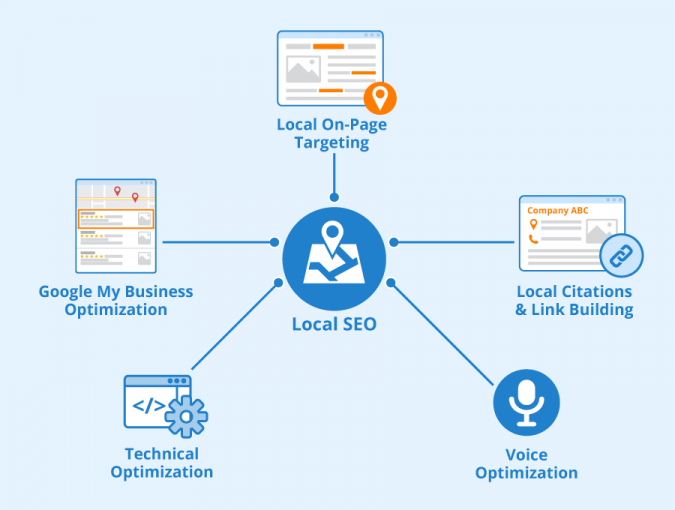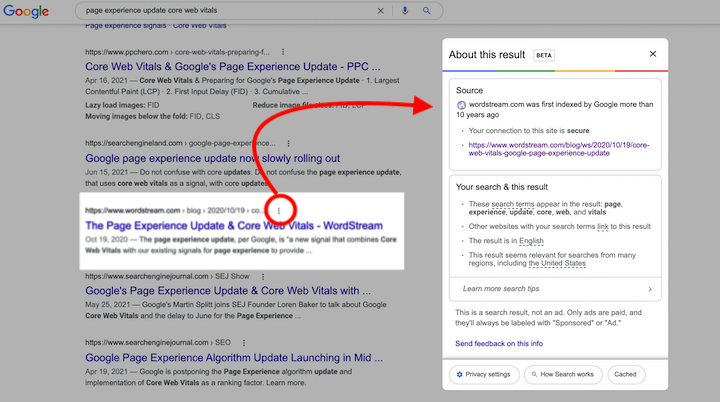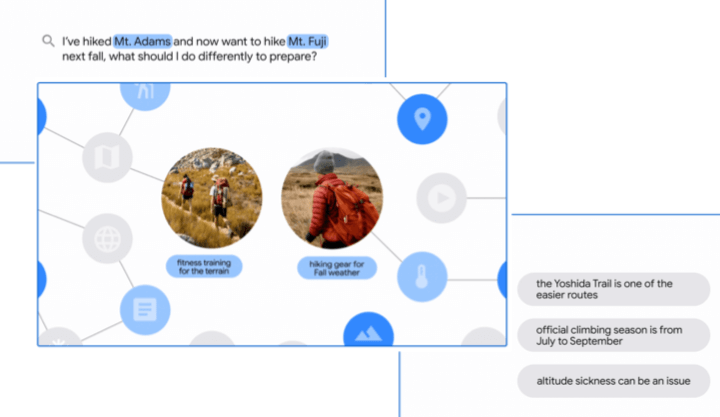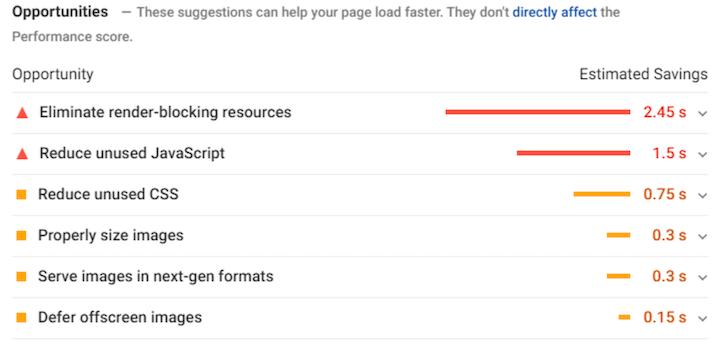Would you like to learn everything about SEO? Before I show you how it functions and how to do it, how about we initially go over the meaning of SEO, and afterward we will plunge into how SEO functions.
What Is SEO?
Website design enhancement represents site improvement. Web optimization is the most common way of finding a way ways to help a site or piece of content position higher on Google.
The critical distinction among SEO and paid publicizing is that SEO includes "natural" positioning, which implies you don't pay to be in that space. To make it somewhat less difficult, site design improvement implies taking a piece of online substance and advancing it so web crawlers like Google show it towards the highest point of the page when somebody looks for something.
Check out it along these lines. At the point when somebody types "vegetarian lasagna" into Google, they're probably searching for a formula, fixings, and guidelines on the most proficient method to make it. In the event that you composed an article about making veggie lover lasagna, you'd need individuals to discover your formula. For anybody to discover it, you need to rank over the wide range of various sites with plans for vegetarian lasagna. It's difficult, however that is the thing that SEO showcasing is about.
We should separate it much further: most of online hunts start with a web crawler like Google. Indeed, 75% of those ventures start on Google.
To all the more likely see how you can rank your substance higher in the web indexes, you need to initially see how search functions.
A definitive objective of this article is to assist you with understanding the intricate details of search so you can upgrade your substance to rank higher on Google and get more eyeballs on your posts.
Center Elements of SEO: On-Page SEO and Off-Page SEO
With regards to more extensive SEO, there are two similarly significant ways: on-page SEO and off-page SEO.
On-page SEO is tied in with building content to work on your rankings. This comes down to joining watchwords into your pages and content, composing excellent substance routinely, ensuring your metatags and titles are catchphrase rich and elegantly composed, among different components.
Off-page SEO is simply the streamlining occurring off of your site itself, for example, acquiring backlinks. This piece of the situation includes building connections and making content individuals need to share. However it takes a great deal of legwork, it's essential to SEO achievement.
Website optimization Strategies: Black Hat Vs. White Hat
I've generally played the drawn out enterprising game, and I trust it's the best approach. Nonetheless, this isn't the situation with everybody. Certain individuals would prefer to take the fast gains and move onto something different.
With regards to SEO, going for speedy increases is regularly alluded to as "dark cap SEO." People who carry out dark cap SEO will in general utilize tricky strategies like watchword stuffing and connection scratching to rank rapidly. It may work for the present moment and get you some traffic to your site, however inevitably, Google winds up punishing and in any event, boycotting your site so you'll never rank.
Then again, white cap SEO is the way of building a manageable web-based business. In the event that you do SEO thusly, you'll center around your human crowd.
You'll attempt to give them the most ideal substance and make it effectively open by playing as per the web index's standards.
Copy content: When somebody attempts to rank for a specific catchphrase, they may copy content on their site to attempt to get that watchword in their text again and again. Google punishes locales that do this.
Undetectable text and watchword stuffing: Years prior, a dark cap system was to incorporate a huge load of catchphrases at the lower part of your articles yet make them a similar shading as the foundation. This methodology will get you boycotted rapidly. The equivalent goes for stuffing in watchwords where they don't have a place.
Shrouding and diverting: When it comes to diverts, there's a good and bad way of doing it. The incorrect way is purchasing up a lot of watchword rich areas and guiding all the traffic to a solitary site.
Poor connecting works on: Going out and buying a Fiverr bundle promising you 5,000 connections in 24 hours isn't the correct manner to assemble joins. You need to get joins from important substance and destinations in your specialty that have their own traffic.
Since Google punishes destinations that do these things, you'll just hear me talk about white cap SEO.
However, there is such an incredible concept as dim cap SEO. That implies it's not as unadulterated or blameless as the whitest of white caps, yet it isn't exactly really unfortunately manipulative. You're doing whatever it takes not to deceive anybody or purposefully game the framework with dark cap. Notwithstanding, you are attempting to get an unmistakable benefit.
It couldn't be any more obvious, Google's principles aren't just about as obvious as they'd like you to accept. Commonly, they may even express disconnected things. For instance, Google has said they're not an aficionado of visitor contributing to a blog to construct joins.
Presently, what might be said about visitor contributing to a blog to develop your image? Consider the possibility that you do it to fabricate mindfulness, produce top notch traffic back to your site, and become a commonly recognized name in the business.
In the SEO world, it's less with regards to what you do however how you do it. In case you're buying visitor posts on locales that steer clear of your specialty and spamming a lot of connections, you will get punished. In case you're making remarkable visitor presents that offer some incentive on perusers on locales that are applicable to you, you'll be fine, and the connection juice will stream pleasantly to your site.
Search engine optimization Marketing Basics: The Complete Breakdown
Presently it's an ideal opportunity to figure out how to do SEO advertising. Understanding it is a certain something, yet SEO requires a ton of activity and time. This isn't something you can roll out an improvement to now and hope to get results tomorrow. Search engine optimization makes every day moves with the objective of long haul achievement.
Content
You've presumably heard it previously: "Quality written substance is the final deciding factor." Bill Gates made this forecast in 1996, and it's as obvious as could be expected today.
Why?
Since a Google client is cheerful when they discover the outcome that serves their requirements in the most ideal manner.
At the point when you Google "speedy and simple custom made macintosh and cheddar," Google places all its energy into conveying to you what Google accepts is the best formula for natively constructed macintosh and cheddar (that takes brief period and utilizations few fixings) on the whole web.
It doesn't search for simply the speediest formula, simply the most straightforward formula, or toss out a lot of online shops for frozen suppers. It attempts to give you precisely what you requested. Google consistently attempts to give the most ideal experience by guiding you to the best substance it can discover.
This implies your main task to take care of well with SEO is to create incredible substance.
That is a bummer, correct? You actually need to place in a huge load of work. Search engine optimization is the same than some other ability: extraordinary outcomes come from large exertion. Actually like the best advertising on the planet will not assist you with selling an awful item, very progressed SEO is futile on the off chance that you don't have quality substance.
Components of Content
There are 1,000,000 components that go into making excellent substance; the following are a couple of my most critical ones:
Quality Once, posting a piece of content with a lot of catchphrases was the norm. In case you were making quality substance that really tackled somebody's concern, you were a champion, and that made it simple to rank.
Today, content is greatly improved, and numerous web-based organizations have websites they use to enhance their webpage and rank higher on Google.
Thinking of incredible substance is difficult, yet the uplifting news is, you don't generally have to make your substance without any preparation. You can piggyback off of what others have made however basically add more worth and make your piece of content more top to bottom.
Basically your substance needs to tackle an issue or give an answer for whatever carries the peruser to your post. In the event that it doesn't, they'll rapidly click away from your page, telling Google your piece of content isn't taking care of anybody's concern.
Goal
Google puts a great deal of accentuation on purpose. It needs to get what the searcher is searching for when they type something into the hunt bar.
Would they like to know something?
It is safe to say that they are attempting to purchase something?
It is safe to say that they are window shopping?
As the substance maker, you need to comprehend this also. You can't make a piece of content about the "best ice casting poles" and target "bass fishing" as your essential catchphrase. It doesn't bode well since individuals don't ordinarily utilize ice casting poles to look for bass exposed. In this way, you're not giving the right response to the question, and Google will know.
Newness
HubSpot set a benchmark showing that posting every now and again assists with Google rankings. Notwithstanding, posting new substance is just a single way of flagging Google newness. There are a lot of things you can do with content you've effectively distributed to make it more modern.
Going through and refreshing your substance for exactness, fixing any messed up joins, and invigorating old information with new measurements that are more pertinent are on the whole ways of showing Google your piece of content actually merits a spot on page one.
4 Tips for Creating Quality Content
Here are my best tips for making the best substance perusers love and Google regards:
Comprehend client aim: You need to know what the peruser needs to achieve when they land on your page.
Foster a client symbol: You additionally need to know who your peruser is, the thing that they like, what they aversion, and why they're there.
Separate the text: People have diminutive capacities to focus, and composing goliath dividers of text doesn't work any longer; you need to split it up with a lot of headers and pictures.
Let us know how do you feel about this blog and thanks for reading. Happy Learning









